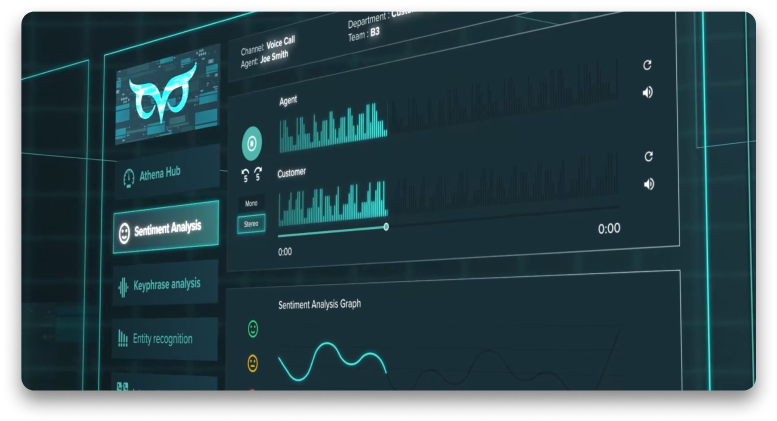The future of Artificial Intelligence for business is forever evolving, and as we step into the future AI is projected to play a prominent role in determining the ways of contact centre workforce management.
The power of being able to forecast across multiple different channels is changing the way we work, in a more effective and smarter way. Recent developments of AI such as Machine Learning (ML) are changing how contact centre workforce management operates, creating business value through the automated improvement of highly accurate statistical models and predictions.
According to Accenture, it is predicted that AI will increase business labour productivity up to 40% by 2035. Connex One’s Customer Engagement Software is already affording their clients a 33% uplift in productivity with Gamification features. They continue to integrate the use of AI to facilitate forecasting and scheduling into our workforce management tools, enabling employees and managers to take full control over shift organisation, resulting in increased productivity and revenue.

Handling complex shift requirements
With Connex One’s Scheduling function, you can insert “What If” calculations to apply a mathematical calculation based on how your contact centre is growing.
If you have a high number of agents, each with specific work schedule requirements, for example, agent 1 is scheduled to work 4 days a week, but can’t work Tuesdays and Saturdays, agent 2 is available to work 5 days a week but can only start after 10 am and cannot work later than 9 pm, that is very hard to manage manually, but using the AI system, it can automatically calculate a schedule that meets everyone’s needs.
Over the past 5 years, an increasing number of contact centres have started utilising an AI-based forecasting solution that can instantly evaluate numerous different algorithms and leverage historical data patterns including; seasonality, cyclicality, multi-skilled capabilities and omnichannel routing, to make forecasting more efficient and effective.
This is an ongoing process as the data needs to first be trained.
In the first instance, the parameters need to be detected which will go into the model. Some tools allow you to do this automatically which simplifies the job of the data scientist. “Once you know the parameters that give you the most accuracy, it is fairly straightforward to upload and apply the AI functions”, says Dmitry. Having a strong Machine Learning Model deployed at the beginning that gathers the data, trains the model and speeds up the results will determine your accuracy and success.
The future benefits for CX agents
AI solutions are not only centred around increasing company revenue and improving productivity but additional benefits that impact the agents directly. AI ‘Whisper Coaching’ is a solution that Connex One has developed to enable coaching and training agents in real-time, as well as providing historical data about customers. It’s a tool that is used to improve agents’ performance on their own accord without the need for lengthy training sessions or in-person coaching.
Whisper Coaching is a tool to assist both agents and managers to improve confidence and performance. It can monitor and listen to live customer calls for training or management purposes, analysing the sentiment and speech patterns of the customer to determine how well the call is going.
If the call is not going well, the AI will flag this and offer managers the ability to speak directly to agents whilst on the call, to offer advice and guide their conversations, as well as providing them with the option to take over the call if the agent needs help or has made a mistake.
It’s important to note that AI is not poised to replace contact centre managers. Instead, the increasingly valuable role that AI will play is in workforce management; automating administrative tasks that are time-consuming for management and processes with a lot of room for human error e.g. scheduling and reporting. This allows managers and agents time to focus on more complex tasks and provides more opportunity to ensure successful customer engagement whilst boosting employee wellbeing in the process.

Improving workload management: AI forecasting
Having the ability to forecast is one of the most critical functions for a contact centre. It enables short and long term planning that allows for future demands and gives contact centres the capability to connect their customers to the right agent at the right time. With rising customer expectations, contact centres need to be equipped to accurately predict the required agent skillset for incoming interactions.
This task is exceptionally hard to do in an ever-changing customer-led environment, thus relying on AI is vital to achieving contact centre business success. AI can be used for forecasting across multiple different channels (e.g. email, text, phone call or Live Chat) to predict how many interactions are going to be generated through different campaign ads across different channels.
Looking at the past behavioural history of customer’s through traction gained over voice, text, messenger channels, the data can be accumulated to build models that will forecast the numbers for the future. The accuracy of this technology relies on continuously testing different models and identifying the one that provides the most accurate forecast under specific conditions. Connex One’s Workforce Management AI works to distinguish between long term and short term forecasts. For longer-term forecasts, predictions can reach over a month or to a year. This helps data centre managers know how many agents will need to be hired in the future.
Dmitry Sityaev, Head of Data Science and AI at Connex One explains that “for short term forecasts, we are trying to predict the incoming customer interactions for two weeks or a month ahead. This requires looking at a more granular pattern of how many agents we will need for the month or on a day to day basis”.
AI forecasting relies heavily on historical data, and therefore will only be as strong as the data your business can provide. Basing your models on strong historical data, AI can schedule the appropriate agent shifts according to the predicted interaction volumes for the day and time by utilising the scheduling function. Work is then distributed and assigned across teams according to the agent’s skill set. The AI will determine through the various channels what type of request is incoming, the type of interaction required, determining whether the AI chatbot can handle this request, or if it needs to be rerouted to a specialised agent with a specific knowledge or language skillset. The call or chat will then be redirected accordingly.

Rules to improve scheduling and employee engagement
It is estimated that engaged employees contribute roughly 20 percent more revenue than employees who are simply just content with their work. With increasing importance placed on maintaining positive employee and customer engagement, scheduling is one of the most critical ways to ensure employees feel they have support for a work/life balance.
By building an employee-focused culture, your business can improve retention and performance by letting staff view and manage their shift patterns. In addition, the AI allows managing self-service holiday requests, by calculating off-peak or high demand days and times, upcoming events, or expected workload, to suggest approval requests for managers.
To see how Connex One could improve your contact centres forecasting through our AI Workforce Management module, we offer customers a 30- day free trial to try out our platform before making any commitments. To claim your free trial or request a free demo of our platform, contact our sales team at hello@connexone.co.za or submit your request here.


